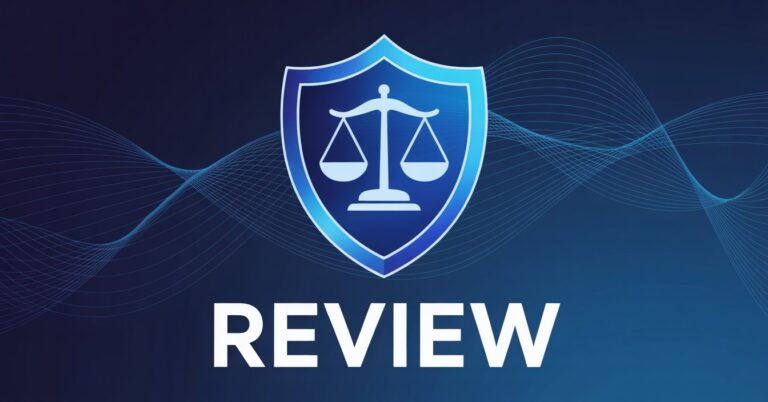How Personal Injury Lawyers Can Make a Fortune with AI By Taking on Smaller Injury Claims They Historically Declined
Back when I practiced injury law I had a prospective client call me. They were injured in car crash. Not catastrophic; mostly soft tissue but the injury was lingering and they were getting treatment. It was a legit claim that would fetch somewhere in the $30K to $60K range.
Turned out their motor vehicle crash occurred in the US. They lived in Canada. I practiced in Canada. I told them they’d have to hire an attorney in the state where it occurred.
It was a case I would have taken on (I was pretty junior at the time), and so I thought it wouldn’t be hard for her to get an attorney in the US. I made a few calls for her, and not one firm was interested. The consensus was that if there wasn’t blood, gore, and/or broken bones, they weren’t interested.
Looking back, I’m not surprised because injury law in tort states is huge, huge money. There are no caps on pain and suffering (unlike in Canada, where non-pecuniary damages are capped at around $460,000). Juries and judges are typically more generous in the US than in Canada.
What this tells me is there is a seriously large group of injured victims in the US (and Canada for that matter) who are not able to hire a lawyer on contingency and yet these cases exceed the small claims court amount. I’m talking about the $20,000 to $60,000 cases.
That’s not chump change, but I also understand law firm economics. Unless you have some fresh law school grad to hand off these cases to, it doesn’t make much financial sense to take these on by way of contingency… that is, until NOW.
How AI is changing personal injury law economics
The thing about a $30,000 case is it’s pretty much the same amount of work as a $300,000 case. Drafting a demand letter, coordinating medical appointments, lining up expert reports, writing medical summaries, preparing mediation briefs… it’s pretty much the same amount of work. Until AI hit the scene, all that was a lot of work. These days, it’s a few hours tops, with the help of AI and the right AI platform (specifically AI for injury law firms).
Let’s break it down just for kicks. I’m spitballin’ numbers here, so keep that in mind.
Pre-Litigation Time Spent Pre-AI
- Intake and client consultation: 1.5 hours
- Collect medical records, police report, etc. 1 hour
- Create medical summary: 5 hours
- Draft demand letter: 8 hours
- Client communications: 1.5 hours
- Adjuster communications: 1 hour
- Expert witness (doctor/physiotherapist) communications: 1 hour
- TOTAL: 19 hours.
- 19 hours x $300 per hour equals $5,700
If the case resolves for $30,000, a 33% contingency fee is $10,000.
Seems like a great deal, but it isn’t in many instances. If all $30K cases settled for $30K pre-litigation, yes, that would be a stellar business model. A $10K fee would be approx. $600 per hour which is definitely respectable, especially for a junior lawyer.
There’s also money the firm must spend on advancing the case, so there are opportunity costs in the form of money invested and time spent. If a firm can only finance X number of cases and can only litigate Y number of cases, it’s going to cherry-pick the most valuable cases.
The problem is that not all these small cases settle pre-litigation. Once litigation starts, time spent explodes exponentially. It doesn’t take long down the litigation path for these cases to end up earning very little per hour.
Hence, these $20K to $60K cases fall through the cracks in the USA and Canada. Lawyers aren’t interested in them. Yet, these cases are too large for small claims. What are these injured folks to do?
That’s where AI-assisted injury lawyers can come to the rescue.
With AI at the helm operating in a highly streamlined system, the time spent on every step of the way is a fraction of what it was.
Sample time spent pre-litigation with AI
- Intake and client consultation: .5 hours
- Collect medical records, police report, etc. 1 hour (soon, agentic AI will handle all this so time spent will be a couple of minutes).
- Create and review medical summary: 1 hour
- Draft and review demand letter: 1 hour
- Client communications: .5 hours
- Adjuster communications: .5 hour
- Expert witness (doctor/physiotherapist) communications: 1 hour
- TOTAL: 5.5 hours.
- 5.5 hours x $300 per hour equals $1,650
As you can see, AI completely changes the economics. It does more than save time on paperwork. It reshapes the entire workflow. Litigation becomes more profitable because the work that used to take hours can now be done in minutes.
The only place AI will not save time is in court, and that is fine. Trials are rare, and preparation is now much faster. A lawyer who once handled 75 active files can now handle 250 with the same team and office space.
Even if ten percent of those cases go to trial and take longer, the other ninety percent will still be highly profitable. The numbers work because the firm can process five to ten times more cases without increasing overhead. That is the real story. AI does not just make smaller cases possible. It makes them worth taking.
Why Smaller Claims Are the Next Big Opportunity
AI levels the playing field for small and mid-sized injury claims. What used to take twenty hours now takes five (pre-litigation). When that happens across dozens or hundreds of cases, the economics shift dramatically. A lawyer who used to handle 75 active files can now handle two hundred and fifty without adding staff or office space. The overhead doesn’t rise, but revenue does. That’s the new math of personal injury law.
Once a firm builds repeatable AI workflows, it can turn low-value claims into a reliable profit engine. Every intake, demand letter, and medical summary can run through a consistent system. Paralegals or case managers become supervisors rather than producers. The lawyer’s role narrows to review and judgment calls, where human input truly adds value.
The Workflow Reinvented
An AI-assisted personal injury practice runs on structure; it requires significant investment in an injury-focused AI platform (such as ProPlaintiff.ai). It then requires significant time to set it up so that it processes claims accurately and efficiently. Intake forms sync directly to document-generation tools. Uploaded records are summarized automatically, with links back to source pages. Demand letters are drafted from pre-trained templates that integrate medical findings and liability arguments. A lawyer reviews, edits, and signs off.
Each step is logged, versioned, and searchable. Discovery responses, mediation briefs, and settlement proposals can be spun up in hours instead of weeks. The more cases a firm feeds into the system, the smarter it becomes at identifying patterns, damages, and negotiation strategies.
Staffing also changes. Firms may need fewer paralegals for document review but more client service coordinators to handle the increased caseload. The economics still work because AI reduces billable hours far more than it increases overhead.
Contingency Fees Meet Scale
Before AI, contingency fees required cherry-picking. Now, scale solves the problem. A lawyer can take ten $30,000 claims instead of one $300,000 claim and earn the same gross fee with less risk concentration.
The economics look even better when client acquisition costs drop. Smaller claims are less competitive to sign. AI chat intake, automated follow-ups, and instant document requests can handle prospect screening at almost zero cost. The firm that embraces automation can profitably represent clients that its competitors ignore.
Litigation Becomes Manageable
Even when smaller cases enter litigation, AI dramatically reduces the pain. Drafting pleadings, interrogatories, and witness lists can be templated and adjusted in minutes. Discovery indexing, timeline creation, and exhibit labeling are all automatable. AI tools can even flag inconsistencies or missed evidence across documents.
The result isn’t less lawyering. It’s a better allocation of lawyer time. Court appearances and strategic decisions remain human work, but the prep work is no longer the bottleneck. The firm that once avoided modest-value cases because of “time drag” can now handle them with ease.
What about in no-fault states? Are there opportunities?
Since I stopped practicing injury law, my jurisdiction in British Columbia has moved to a mostly no-fault system for motor vehicle claims. Claims up to $50,000 are now handled through an online Civil Resolution Tribunal. Only pecuniary damages are awarded. A claimant uploads the required documents, and a decision is made on the record.
In most no-fault states, claimants deal directly with their own insurer and hope for the best. If they disagree with an adjuster’s decision, there are internal review or appeal options depending on the state.
So, is there room for lawyers in this model?
I think there is. People are intimidated by anything that involves law. Most have no idea how to present their claim in the best possible way. Lawyers can add value by organizing, summarizing, and presenting the claim effectively. The problem has always been economics. It rarely made sense to take on this work for a modest fee.
AI changes that. A lawyer can now gather all materials, prepare a clean submission, and attach a demand letter for a fixed fee between $1,000 and $3,000. The process can be done quickly with AI assistance. And in my experience, a claim that arrives on an insurer’s desk with a law firm letterhead carries more weight.
For this to be profitable and worthwhile, the AI system has to be airtight and highly efficient. This kind of work starts to look like conveyancing — high-volume, predictable, and repeatable. Done right, it can become a steady, scalable line of business.
Or will AI Make Everyone a Litigator Who Don’t Need a Lawyer?
The same AI that helps lawyers is also helping thousands of people act as litigants on their own. Pro se filings are already rising, and I suspect they will surge over the next few years. People are learning that ChatGPT can produce surprisingly solid pleadings and provide clear step-by-step procedural guidance.
Does that make the high-volume model futile? Possibly. Nobody really knows yet. It is one thing to have ChatGPT draft something for you, and another to rely on it when the stakes are real. AI still makes plenty of mistakes, and most people will not want to risk their case on a chatbot’s judgment.
My guess is that pro se litigation will keep growing, but mostly among those who cannot afford a lawyer. For everyone else, if a lawyer offers contingency representation, it is an easy choice. The flat-fee model is trickier. For many people, paying $1,000 to $3,000 feels steep when the expected payout is modest. Still, if AI drives down the time required, even a small number of clients could make this kind of practice sustainable.
Ethical and Strategic Guardrails
Efficiency doesn’t erase responsibility. Lawyers still review every document and verify every output. That’s what keeps the system ethical and defensible. The goal isn’t to hand off representation to machines but to augment judgment with automation.
Smart firms MUST build clear policies around AI use: disclosure, supervision, data privacy, and client consent. They’ll treat AI as a paralegal that never sleeps, not a lawyer that thinks for them. The firms that formalize these rules early will stay ahead of both regulators and competitors.
Use of AI Disclosure to Clients
This part is critical. Lawyers using AI in their practice should tell clients up front that much of the file will be processed and advanced with AI under the lawyer’s supervision.
It is not just an ethics issue; it is a trust issue. Clients want to know how their case is being handled. Most will appreciate the efficiency as long as they know a real lawyer remains responsible for strategy and judgment calls.
A short paragraph in the retainer agreement or engagement letter can do the job. It should explain that AI tools help with drafting, summarizing, and document management, but every step is reviewed and approved by the lawyer. Transparency early on prevents confusion later and sets a professional tone from day one.
The Bigger Picture
This shift doesn’t just help lawyers. It widens access to justice for thousands of people who could never find representation. When smaller claims become economically viable, more injured clients get help, settlements rise, and insurers face fairer accountability.
Ironically, what AI does best in law is restore something deeply human: attention. Lawyers can finally serve more people without burning out, overbilling, or turning away legitimate claims.
My Take
I believe this is where AI will quietly transform personal injury practice over the next few years. Not in splashy “robot lawyer” headlines but in the day-to-day grind of case files that used to be too small to be sufficiently profitable at scale.
The firms that build streamlined, AI-assisted systems for these mid-range claims will create an entirely new profit tier in the industry. They’ll also do something rare in law: make more money by helping more people.




